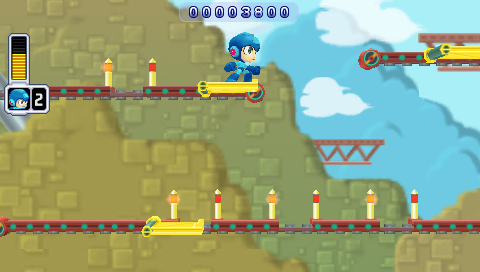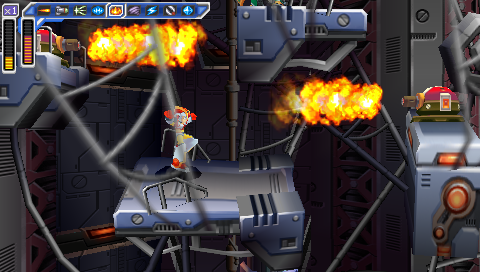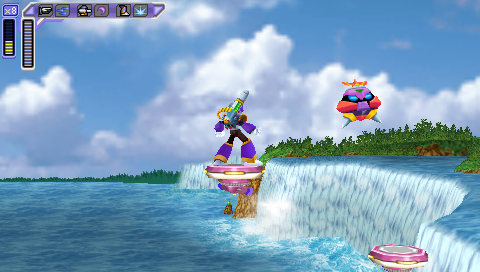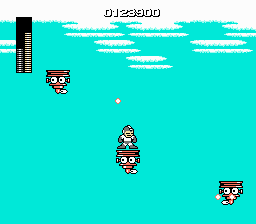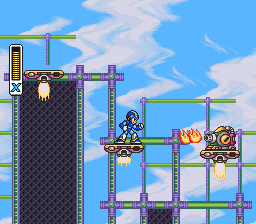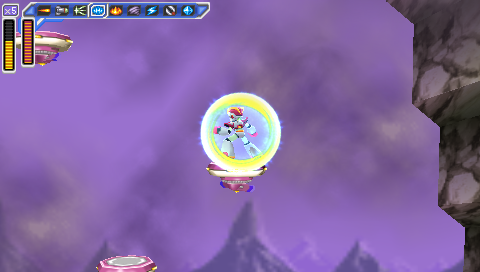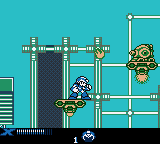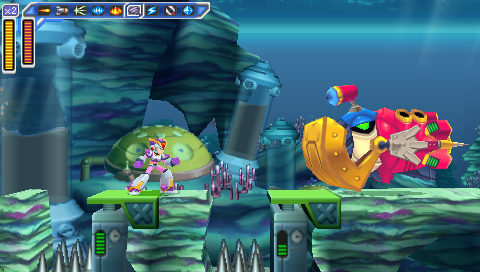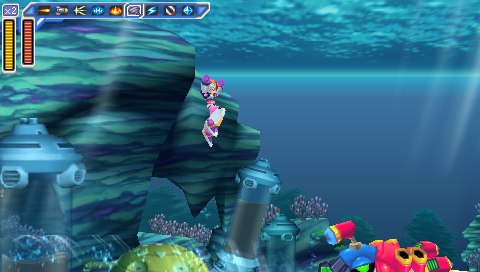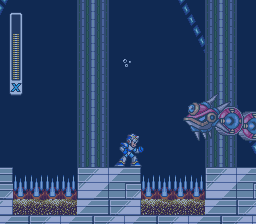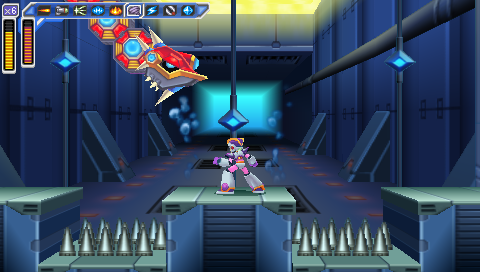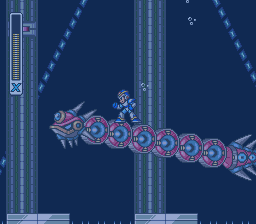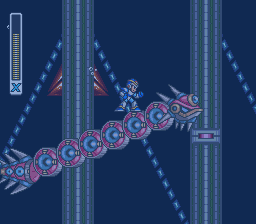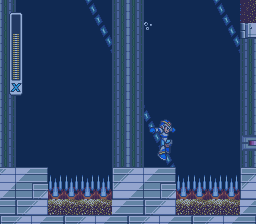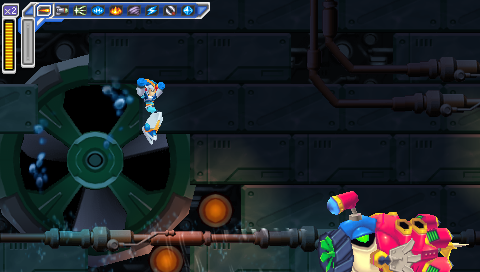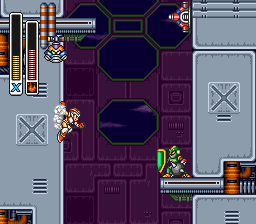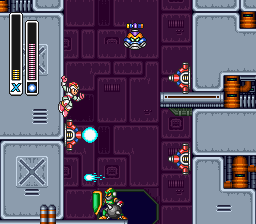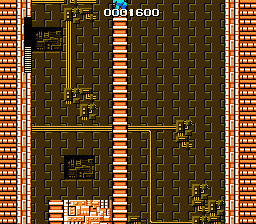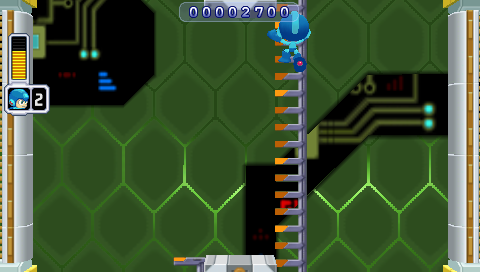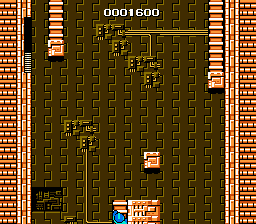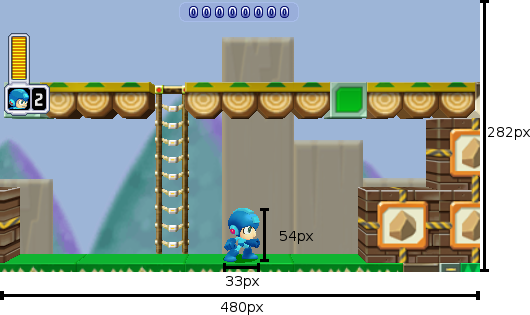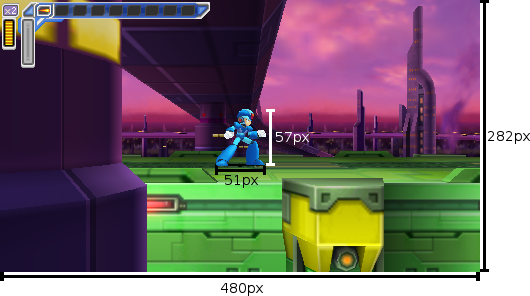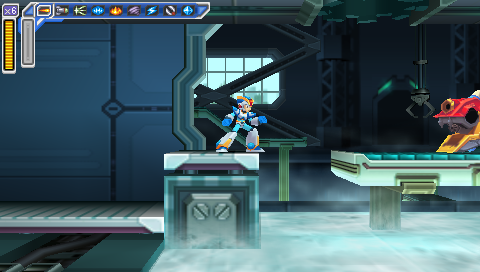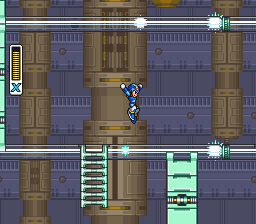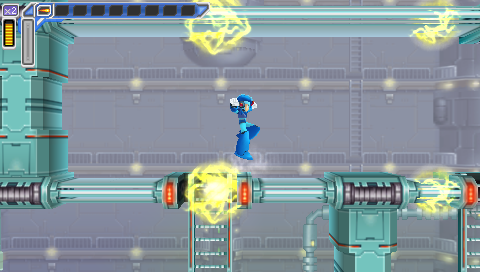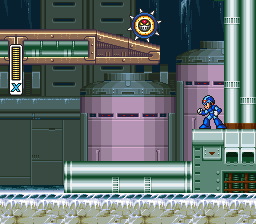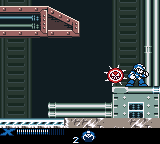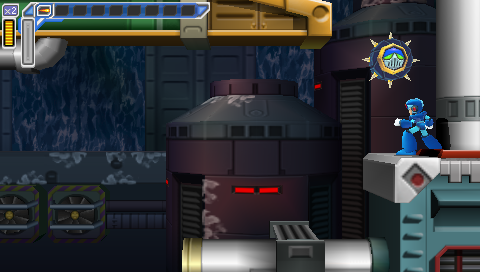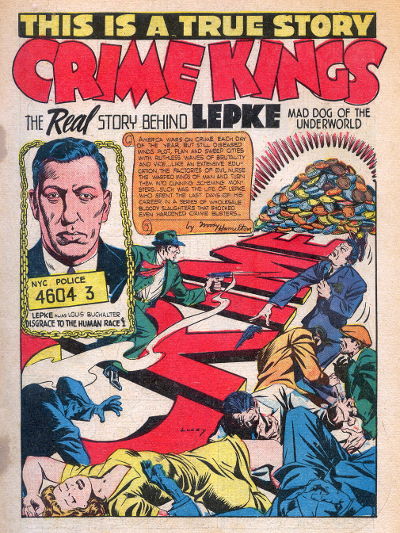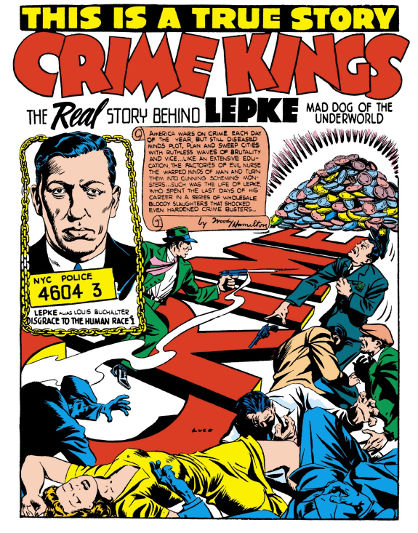So awhile back I started re-watching The X-Files. It's available on Hulu, in a very nice HD remaster. (Apparently the entire series, except the pilot, was originally filmed in widescreen, so the remastered episodes aren't cropped, they're actually expanded -- except, again, the pilot. And also seasons 5-9, which aired in widescreen the first time, but now they're also in HD.)
I'm also working my way through Millennium (which is not available in any format other than DVD and illegal download), and I'll watch Lone Gunmen when I get to that point in the chronology.
And I got to thinking, you know, I should make a list of what episodes are worth watching -- since, let's be honest, there are a hell of a lot of them that aren't.
Now, X-Files episodes are generally broken down into two categories: mythology episodes (the continuity based ones that deal with the overarching plots about aliens and a massive government conspiracy) and monster-of-the-week episodes (the standalone, one-off episodes). Generally speaking, I like the monster-of-the-week episodes better; they have more variety in both content and tone, they're often a lot of fun, and they don't string you along with the idea that they're building toward some kind of grand resolution. (Spoiler alert: there is no grand resolution; the writers are making the mythology up as they go along.) But, on the other hand, there are mythology episodes I really like, and they're fun in their own way despite the continuity being a hodgepodge and a mess.
So I'm going to split this up into two sections: monster-of-the-week episodes and mythology episodes, and in my next post I'll tackle Millennium episodes. (So far every Millennium episode I've liked has been a mythology episode.) And I'll plan on keeping these posts updated as I work through the series, so expect more episodes to be added, and a post added for Lone Gunmen when I get around to it.
Lastly: I'd be remiss if I didn't link to Monster of the Week: The Complete Cartoon X-Files, a webcomic by Shaenon K Garrity which goes through the series one episode at a time and lampoons them. (Most of them. Some are so good that she plays them straight.) Oh, and if you want a really thorough breakdown, you could give Kumail Nanjiani's X-Files Files podcast a listen too.
Anyway, on to the actual recommendations.
Monster-of-the-Week Episodes
I thought of putting mythology first, but the monster-of-the-week episodes are easier to get into for a casual viewer, so I'm going to put those first. These episodes can, generally speaking, be watched in any order and without any knowledge going in besides "Mulder and Scully are FBI investigators who look into paranormal stuff; he's a believer and she's a skeptic."
Season 1, Episode 3: Squeeze
Introduces stretchy bad guy Eugene Tooms, probably the most memorable of the show's many Monsters of the Week, and one of the few to get a second appearance.
Season 1, Episode 8: Ice
An episode in the "People are trapped in a remote location and start turning on each other" mold.
Season 1, Episode 20: Darkness Falls
A good race-against-time episode with killer insects, albeit with kind of a disappointing ending.
Season 1, Episode 21: Tooms
Tooms's second and final appearance; first appearance of Walter Skinner.
Season 2, Episode 2: The Host
Darin Morgan plays a sewer monster called Flukeman, with some of the best monster makeup in the series; first appearance of Mr. X.
Season 2, Episode 20: Humbug
First episode written by Darin Morgan; first episode explicitly written as a comedy; features circus folk. X-Files is always a little uncomfortable when it deals with anybody who's different (be that ethnic minorities or people with disabilities), and I feel a little bit of that here, but I think it also comes across as a celebration of its guest stars.
Season 3, Episode 3: DPO
Giovanni Ribisi plays a slacker teenager with lightning powers who hangs out in an arcade (where the Sonic the Hedgehog music is inexplicably playing even though that is not an arcade game). Jack Black plays his sidekick.
Season 3, Episode 4: Clyde Bruckman's Final Repose
Okay, here we go. If you only watch one episode of X-Files, ever, it should be this one. It's pretty much perfect in every way, and it won two Emmys, one for writer Darin Morgan and the other for guest star Peter Boyle.
Boyle plays a lovable but curmudgeonly old psychic who can see the moment everyone around him dies.
I think I'd give a slight edge to Jose Chung's From Outer Space (also written by Darin Morgan) as my all-time favorite episode. But this one is more accessible.
Seriously, if you haven't seen Clyde Bruckman's Final Repose, you can skip the rest of this list until you've seen it. It's not just X-Files at its best, it's TV at its best.
Season 3, Episode 11: Revelations
Gets into Scully's Catholicism a bit; it's the second religious-themed episode where the leads reverse their roles and she plays the believer against Mulder as skeptic. (The first is Beyond the Sea; it's down below in the Mythology section.)
Season 3, Episode 12: War of the Coprophages
Another episode written by Darin Morgan. It has what may very well be the dumbest premise of any episode (people are being killed by swarms of cockroaches, which turn out to be alien robot cockroaches sent to observe us), but Morgan's script is sharp enough to overcome it. This one's got some of the funniest dialogue of the entire series.
Season 3, Episode 13: Syzygy
Mostly fun for Mulder and Scully being really bitchy toward each other. Guest starring Lisa Robin Kelly and (briefly) Ryan Reynolds.
Season 3, Episode 20: Jose Chung's From Outer Space
The final episode written by Darin Morgan (though he did a rewrite on Quagmire; see below). As noted above, I think this one edges out Clyde Bruckman's Final Repose as my favorite. It's got unreliable narratives within unreliable narratives, men in black played by surprise guest stars, stop-motion kaiju, and Charles Nelson Reilly.
Season 3, Episode 21: Avatar
Skinner episode.
Season 3, Episode 22: Quagmire
Lake monster episode. Mostly forgettable, except for a scene where Mulder and Scully get to talking while they're stranded on an island; that scene was written by Darin Morgan.
Season 4, Episode 2: Home
Okay, I'm going to say it: Home is overrated.
It's impeccably directed (by Kim Manners), and it's possibly the most memorable episode of the whole series. But it's memorable entirely because of cheap shock value.
I think it's one of those episodes you've just gotta watch once, and it will stick with you. It blew me away the first time I saw it. But when I came back to it 18 years later, I was a lot less impressed. (So okay, maybe this one shouldn't be on a list of my favorites. But it's definitely a must-watch episode, so I'm putting it here anyway.)
Season 4, Episode 5: The Field Where I Died
This one's got a few plot holes (how can the Cigarette Smoking Man be a reincarnated Nazi prison guard if he was alive during the Holocaust?), but it's got some great character moments for Mulder, and showcases Duchovny's acting range in a way that most of the rest of the series doesn't.
Season 4, Episode 10: Paper Hearts
Mulder matches wits with a child molester who he helped put in prison. Potential retcons to the story of Samantha's abduction, but then no they don't pan out and that's why this isn't under Mythology Episodes.
Season 4, Episode 11: El Mundo Gira
The Chupacabra episode!
Season 4, Episode 12: Leonard Betts
One of those "Nice unassuming man who starts killing people because he has a weird power" episodes. Also, foreshadows Scully's cancer.
Season 4, Episode 13: Never Again
A Scully-centric episode where she gets a tramp stamp of the Millennium logo and almost hooks up with a guy with an evil Bettie Page tattoo.
Season 4, Episode 20: Small Potatoes
An episode written by Vince Gilligan and guest starring Darin Morgan as a shapeshifter. The highlight of the episode, far and away, is a scene in which he shape-shifts into Mulder and then channels De Niro in Taxi Driver. This is probably Duchovny's finest performance in the show's entire run, and shows he's really got some serious comic chops; everything from his delivery to his body language to his facial expressions is brilliant.
Season 5, Episode 5: The Post-Modern Prometheus
So before I go and recommend this one, there's one caveat I need to get out of the way: this is an episode where two women are drugged and impregnated without their consent, and then the ethical implications of this premise are barely acknowledged.
And it's a shame that this episode has that ick factor hanging over it, because aside from that it's a delight. Carter handles both the writing and direction on this one, and it's an homage to classic monster movies, beautifully filmed in glorious black-and-white and guest-starring Seinfeld's John O'Hurley as its mad scientist. It delivers what its title promises: both a Frankenstein pastiche and postmodernism. It's weird, it's melancholy, it's funny, it's got Cher on its soundtrack, and there's more than one moment that feels like a Mel Brooks homage. If its morality is a little muddy, I'm inclined to be charitable and chalk it up to the episode's heightened reality. The plot doesn't make a hell of a lot of sense, but it's not supposed to; it feels like a dream and it prioritizes style over substance. And it is stylish as hell.
And man, that ending is beautiful.
Season 5, Episode 12: Bad Blood
A stone-cold classic. Vince Gilligan does Rashomon with vampires; guest-starring Luke Wilson and Patrick Renna.
Season 6, Episode 2: Drive
The most notable thing about this episode is that it's written by Vince Gilligan and guest-stars Bryan Cranston. It led directly to their later collaboration on Breaking Bad.
The episode itself is a cross between Scanners and Speed, with a side of Outbreak. Cranston plays Patrick Crump, a man afflicted with a condition that requires him to keep traveling west or he'll die. He carjacks Mulder, and a tense race against the clock ensues.
When this episode was made, Cranston was best-known as the dentist from Seinfeld. Now he's a celebrated dramatic actor. Drive is an important step in that evolution.
Season 6, Episode 3: Triangle
1998's love of swing music and doomed ocean liners combines with time travel and the Bermuda Triangle. In 1939, Mulder fights Nazis aboard the Queen Anne, while in 1998, Scully and the Lone Gunmen try to find him. The two stories mirror each other's plot beats in unsubtle Chris Carter fashion, while some splitscreen shots near the end make for some interesting visual work.
Season 6, Episodes 4-5: Dreamland
Introducing Morris Fletcher (Michael McKean), who switches bodies with Mulder. Hilarity ensues, including one of the all-time best sequences in the series, a riff on the mirror bit from Duck Soup.
Season 6, Episode 6: How the Ghosts Stole Christmas
A haunted house episode guest-starring Lily Tomlin and Ed Asner. There's a bit of a Beetlejuice vibe here, with Tomlin and Asner in the Geena Davis/Alec Baldwin roles.
Duchovny and Anderson do great work here too, from the opening scene where he launches into one of his excited-puppy tales of the supernatural and she just smiles because she's grown to find it more charming than annoying, to the third act where she's paranoid and waving a gun around and he's doing his best Jack Torrance.
Season 6, Episode 8: The Rain King
A fun little "weird shit happens in a small town" episode; Clayton Rohner has a particularly enjoyable turn as an oily grifter who holds rain dances in the style of tent revivals. The third act's got a Back to the Future vibe: like Back to the Future, Mulder plays matchmaker to a nerdy guy whose creepy behavior is depicted as lovable; like Back to the Future, the object of the man's affections falls for Mulder instead; and like Back to the Future, the climax takes place in a high school gym. Scully doesn't do much in this episode, but Anderson's put-upon exasperation is at its finest.
Season 6, Episode 10: Tithonus
This Scully-centric episode about a man who can tell when people are going to die runs a real risk of being a retread of Clyde Bruckman's Final Repose. But Vince Gilligan's script, and Geoffrey Lewis's performance as Alfred Fellig, thread the needle to tell a different story (while still, in its own subtle way, acknowledging Bruckman at the end of the episode). Fellig is not like Bruckman: his powers aren't quite the same (Bruckman could see how people were going to die, whereas Fellig can tell when someone is about to die), and, more importantly, their characterizations are much different: where Bruckman was sardonic and wry, Fellig is haunted and creepy.
Season 6, Episode 21: Field Trip
This episode, perhaps more than any since Quagmire, shows how in the right hands, a deeply silly premise can be transformed into a memorable character piece.
The first half's a little weak, but it's all setup for the main attraction, which centers on Mulder and Scully's relationship and, on a meta level, the show's (increasingly implausible) formula. Not only do Mulder and Scully need each other, not only do they need the arguing and the pushback, but they've reached a point where they can't accept a world where they're not arguing and pushing back against each other.
Season 7, Episode 8: The Amazing Maleeni
The late, great Ricky Jay guest stars as a down-and-out magician whose head falls off following a magic trick gone horribly wrong. A twisty mystery follows, involving a rival magician (Jonathan Levit), twins, gambling debts, and a bank robbery. The ending reveal leaves a few things to be desired -- there's a grand scheme that leans a little too heavily on the schemers predicting exactly what Mulder and Scully are going to do and when -- but while it doesn't quite come together in the end, Jay is so much fun to watch that it doesn't really matter.
Season 7, Episode 19: Hollywood AD
Hollywood producer Wayne Federman (himself) makes an X-Files movie starring Garry Shandling (himself) and Téa Leoni (herself). Along the way Abbie Hoffman becomes Jesus, Skinner gets some good yelling in, and our heroes face the Cigarette Smoking Pontiff, bubble bath, and dick jokes.
Season 7, Episode 21: Je Souhaite
Two idiots find a genie. Guest-starring Kevin Weisman and Will Sasso as the idiots and Paula Sorge as the genie.
Some great comic work in this one, particularly by Gillian Anderson as an uncharacteristically gleeful Scully.
Season 8, Episode 3: Patience
Doggett's first Monster of the Week. Where the first two episodes of season 8 still center around Mulder, this is the first one that shows us what The X-Files looks like without him; it's something of a repilot that establishes the show's new status quo. At least until the midseason when it gets shaken up again.
It involves a bat-creature, but it's not really about a bat-creature. In fact the bat-creature seems like kind of an afterthought, really. It's about Scully and Doggett and who they are and what their dynamic is. Scully, stepping into Mulder's role and finding herself not entirely comfortable there. Doggett, the by-the-book cop who's not naturally inclined to believe any of this X-Files bullshit but he's been assigned to this job and by God he's going to do it, and if that means suggesting maybe they're dealing with some kind of bat-creature based on a newspaper clipping from the 1950s, then by God he's going to do that too.
Even as the show settles back into the formula of believer-and-skeptic, it's clear that it's not going to be the same as it was before. The Scully-and-Doggett pairing makes for an exciting new dynamic. Or at least it does in this episode. Unfortunately, the ones that follow don't quite live up to that potential.
Season 9, Episode 18: Sunshine Days
The last Vince Gilligan X-File, and the last monster-of-the-week -- at least, until the revival in 2016 -- and it's basically a perfect episode.
It's about a man who uses his supernatural powers to recreate the Brady Bunch house, but really it's about the relationship between a TV show and its audience, how shows like The Brady Bunch endure because they make memories. TV can be an escape for a kid whose life isn't going so great, and it can be a bonding experience with the people you love.
I'm writing this in 2023, just shy of 21 years after The X-Files ended its initial run. Decades later, it doesn't have the cultural cachet of The Brady Bunch, but it's proven it has some staying power. And Vince Gilligan's proven he does, too.
Sunshine Days is a victory lap, a look back at the series and what it all meant. It should have been the finale.
Season 10, Episode 3: Mulder and Scully Meet the Were-Monster
Darin Morgan's still got it. A roaringly funny monster mystery guest-starring Rhys Darby, Kumail Nanjiani, and Tyler Labine, featuring Morgan's usual narratives-within-narratives and Mulder's midlife crisis. X-Files at its absolute goddamn finest -- and a pleasingly standalone episode, though longtime fans will enjoy a couple of callbacks to Clyde Bruckman and a nice tribute to the late, great Kim Manners.
Mythology Episodes
These aren't necessarily the most "important" mythology episodes, the ones with plot details that play out through the rest of the series (though some of them are); they're just the ones I like. And anyway, even if you do watch all the mythology episodes expecting them to eventually make sense, you're just setting yourself up for disappointment.
There are some spoilers down here, including character departures.
Season 1, Episode 1: Pilot
Season 1 is a little rough but I love it despite (or because of) its flaws. There's a lot of stuff the show gets right right from the beginning, and the chemistry between Duchovny and Anderson is at the top of the list.
Season 1, Episode 2: Deep Throat
A fun guest appearance by Seth Green and lots of Area 51 stuff.
Season 1, Episode 10: Fallen Angel
Mulder's got fanboys! Introduces abductee Max Fenig, who's something of a template for the Lone Gunmen.
(Max also shows back up in a two-parter in season 4, but it's not on this list because it's boring.)
Season 1, Episode 13: Beyond the Sea
Guest appearance by Brad Dourif; death of Scully's father; first time Mulder is the skeptic and Scully is the believer.
(You could argue that this one's not a mythology episode because it doesn't deal with the aliens/conspiracy arcs, but I'm putting it here because it establishes a lot of Scully's background that is referred to throughout the rest of the series.)
Season 1, Episode 17: EBE
First appearance of the Lone Gunmen.
Season 1, Episode 24: The Erlenmeyer Flask
This is one of those episodes where everything changes, except that it doesn't; everything snaps right back to status quo in season 2: the X-Files get reopened, Scully goes back to being a skeptic even though she's seen an alien fetus in a jar, and while Deep Throat's departure is made out to be a big deal, Mr. X takes over and fills the exact same role in seasons 2 and 3 (after which he's replaced by Marita Covarrubias, who still pretty much fills the same role). Regardless, this one's exciting, and a lot of stuff happens; we've got human/alien hybrids, the Crew Cut Man assassinating people, and the departure of Deep Throat.
Season 2, Episode 5: Duane Barry and Episode 6: Ascension
Scully's abduction and Krycek's betrayal, two plot points that continue to come back up for the rest of the series. It's also got a guest appearance by CCH Pounder.
Season 2, Episode 8: One Breath
Scully's return. She spends most of it in a coma dreaming she's in a boat, but the rest of the cast really gets a chance to shine. There are some great scenes between the Smoking Man and Skinner, Mulder and Skinner, and Mulder and the Smoking Man, and some excellent moments from Mr. X and Frohike too.
Season 2, Episode 16: Colony and Episode 17: End Game
More hybrids; Bounty Hunters; clone colony; first return of Samantha; first appearance of Mulder's father and revelation that he was part of the Syndicate.
Season 2, Episode 25: Anasazi, Season 3: Episode 1: The Blessing Way and Episode 2: Paper Clip
Some really cringe-inducing stuff with Native Americans, but aside from that it's the first appearance of Teena Mulder, and more on Bill Mulder's history with the Syndicate. And there's some Lone Gunmen stuff and a Nazi scientist.
Season 3, Episode 9: Nise and Episode 10: 731
Mulder investigates an alien autopsy video; Scully finds an alien abductee support group (and the first hint that she may have cancer).
Season 3, Episode 15: Piper Maru and Episode 16: Apocrypha
First appearance of black oil; return of Krycek; some more stuff about CSM and Bill Mulder.
Season 3, Episode 24: Talitha Cumi and Season 4, Episode 1: Herrenvolk
More hybrids; more Bounty Hunters; more clone colonies; first hints that the Cigarette Smoking Man may be Mulder's biological father; departure of Mr. X and his immediate replacement by Marita Covarrubias.
Season 4, Episode 7: Musings of a Cigarette Smoking Man
A lot of fans hate this one, and I guess I can understand the perspective that it demystifies the CSM in a way that makes him less interesting.
But I don't agree, and I love it, because it's so deliciously over-the-top. And the reason it's over-the-top is that it's all unreliable-narrator stuff; this is CSM's backstory filtered through his own fiction, published in a porno magazine (whose staff changed some of the details), and then related to Mulder by Frohike.
Basically, it's a tall tale, which ties the Cancer Man to the Kennedy and King assassinations and every other alleged government conspiracy of the twentieth century -- and all because he couldn't get his short stories published.
Season 4, Episode 8: Tunguska and Episode 9: Terma
Return of Krycek and the Black Oil; Mulder and Krycek go to Russia.
Season 4, Episode 14: Memento Mori
This is the "Scully Has Cancer" episode. It's loaded up with Chris Carter purple prose monologues. It's also got the Lone Gunmen, clones, and a callback to that episode where she met the other abductees.
Season 4, Episode 22: Gethsemane
The script is generic cliffhanger-finale fare (though the first act has some nice bits with Mulder, briefly, expressing skepticism), but it's got some truly gorgeous mountain shots that make a great argument for the widescreen HD remaster, some of the coolest creature effects of the series, and some great dramatic work from Anderson. But don't get too excited when you see "John Oliver" in the credits; it's not the John Oliver you're (probably) thinking of.
While this episode is the first of a three-parter, I don't recommend the other two parts; they are boring as fuck. All you really need to know is that Mulder isn't dead and Scully doesn't have cancer anymore.
Season 5, Episode 3: Unusual Suspects
The first episode to focus on the Lone Gunmen as its main characters (with Mulder in a minor role and Scully not present at all) tells their origin story and would eventually lead to their own spinoff. Written by Vince Gilligan, directed by Kim Manners, and for some reason guest starring Richard Belzer as Detective John Munch. (Which I guess puts X-Files, Lone Gunmen, and, by extension, Millennium in the Tommy Westphall Universe.)
Season 5, Episode 13: Patient X and Episode 14: The Red and the Black
This is more or less the midpoint between the season 4 finale and the movie, both chronologically and narratively. Krycek, black oil, Tunguska, the Syndicate, Scully's abduction, the Assassins -- it all plays a bit like a Greatest Hits collection. But perhaps most importantly, Mulder's still smarting from the revelations of last season's finale and this season's premier, and doesn't believe in aliens anymore. And I'm always a sucker for the role-reversal Mulder-as-skeptic, Scully-as-believer episodes.
Also introduces Agent Spender. I remember when these episodes first aired, there were rumors in the fandom that Duchovny was planning to leave the show and Spender was going to replace him. Those rumors turned out to be pretty close to true; we wound up with Doggett, not Spender, but Mulder did leave and get replaced with a new agent. Scully even has a similar "she's the believer now and has a skeptic of her own to deal with" dynamic with Spender here that she eventually has with Doggett.
Season 5, Episode 15: Travelers
'50s X-File! Arthur Dales (Kolchak himself, Darren McGavin!) recounts the story of how he and Bill Mulder investigated Nazi alien experiments and fought the most fiendish villains of all: Roy Cohn and J Edgar Hoover.
Season 5, Episode 20: The End
The plot of this one is dumb. The sniper is dumb; the FBI is dumb. The love triangle with Mulder's ex is forced (Diana Fowley? Seriously? Her name is Diana Fowley?); the King of the Hill cross-promotion is forced.
But there are enough great character moments in this one -- CSM and Krycek! CSM and the Syndicate! Mulder and Skinner! Mulder and Spender! CSM and Spender! Scully and the Lone Gunmen! -- to recommend it. And the final scene...even though it turns out to be maddeningly unimportant in the show's future direction, the cast and the photography really sell it as a big moment. Plus it sets up the movie.
X-Files: Fight the Future: The Movie
The movie is, ultimately, pretty inconsequential, partly because it's stripped down to be accessible to moviegoers who've never seen the TV show. It's a lot of stuff we've seen before; aliens and conspiracies and domes and cornfields and bees and black oil and Scully having to testify before a panel and seriously, how many different roles does Terry O'Quinn play in this series, anyway? But it's got some very pretty photography, and Martin Landau is in it, and it's perfectly decent as a big-budget, extra-long episode. And there's a Rifftrax!
Season 6, Episode 1: The Beginning
Picks up the threads from The End (Gibson, Spender, Fowley) and Fight the Future (alien chest-bursters and the virus spread by bees).
But it's more interesting as an inflection point for the series. This is the episode where shooting moved from Vancouver to LA (doing a convincing impression of Phoenix). It also has Spender and Fowley replacing Mulder and Scully as the official X-Files team, and while this change turned out to be temporary, it paved the way for Doggett and Reyes in the later seasons.
Season 6, Episode 11: Two Fathers and Episode 12: One Son
We finally get a resolution to the "Mulder and Scully are off the X-Files" arc, after half a season of flopping around pointlessly. We also see a slew of other threads picked up: the Spender family! The Mulder family! The Syndicate! The Lone Gunmen! Krycek! Marita! Fowley! Alien fetuses and human hybrids! The rebels! At this point the series mythology has devolved into self-parody, but at least it's entertainingly delivered, with the Smoking Man delivering smug, sinister monologues and Mulder and Scully shooting a train.
And then AD Kersh delivers his best line, as he responds to one of Mulder's purple-prose monologues with, "What the hell does that mean?"
What the hell does that mean? indeed, Assistant Director Kersh. What the hell does that mean? indeed.
Season 6, Episode 19: The Unnatural
Duchovny writes and directs the story of an alien who played in the minor leagues in the 1940s, and how he met Arthur Dales.
But what pushes this from merely a fun '40s Baseball vs. the Klan, with Aliens fairy tale into something even weirder is the framing device. Darren McGavin had a stroke and was unable to complete filming the present-day Arthur Dales scenes -- but they'd already begun shooting the 1940s-era scenes with Fredric Lane as young Arthur Dales. And so, one hasty rewrite later, this episode marks the first and only appearance of Arthur Dales's brother (M Emmet Walsh/Fredric Lane), who is also named Arthur and looked exactly the same in the '40s.
Season 7, Episode 10: Sein und Zeit and Episode 11: Closure
At this point we're three or four, or maybe even five, seasons past the point where it became clear none of the big storylines were ever going to pay off, that, for example, the story of Samantha's abduction would never see any kind of satisfying resolution. So I was pleasantly surprised, halfway through the famously bad season 7, to see Samantha's abduction come back into play in a way that's actually effective -- as a character piece for Mulder.
The two-parter starts out looking like a monster-of-the-week story, with a supernatural take on the JonBenét Ramsey murder, but then bam! mythology episode as Mulder's mother dies and, because Mulder is Mulder, he becomes convinced that she was murdered because she was about to tell him the truth about what happened to his sister.
What we end up with is one of the series' best examinations of Mulder as a character, his motivating tragedy, how it continues to drive him, and how he filters the world through that singular prism. And for a minute there, it even looks like he's achieved the closure that the title of the episode alludes to -- though of course it doesn't last, because it's not that kind of show.
Season 7, Episode 22: Requiem; Season 8, Episode 1: Within and Episode 2: Without
Requiem is frankly kind of a mess, but it's as clean an ending as X-Files was ever going to get. Returning to the pilot to bring the series full circle is a good move, and we get various other nods to the show's history, with varying degrees of success -- the Lone Gunmen are fun as always, and Skinner gets a good solid role, but other bits of continuity, like Krycek, Villarubias, the Cigarette Smoking Man, and the Alien Bounty Hunter don't really add anything and feel more like ticking off boxes.
The story continues in Within/Without, which is largely an exercise in actors rising above the material. I really think the ongoing "Where's Mulder?" plot is a mistake that holds the series back; Carter et al have a golden opportunity to free themselves from the show's increasingly ramshackle and unsatisfying continuity, but as always they just double down on it.
But all those concerns wind up being secondary, because everybody is so fucking great in these episodes. Robert Patrick, in his debut as Agent Doggett, is the highlight, but Mitch Pileggi does some of his best work of the series too, and Gillian Anderson, fresh into the dramatic irony of her new role as the believer to Doggett's skeptic, shows us how even as a believer Scully is a very different person from Mulder. Hell, I even like that they brought Kersh back; the series could use more villains who are just ordinary government bureaucrats. Did I mention how much I loved the scene in Requiem with the auditor complaining about Mulder and Scully's travel expenses?
Season 8, Episode 18: Vienen
The only Mulder/Doggett episode (or at least the only one that isn't bogged down by being part of some major story arc), and, like several episodes in a season that just can't settle into a status quo, it's a fascinating roadmap for what could have been. The show actually works perfectly well with a full house, with Mulder and Doggett off on an X-File and Scully and Skinner handling the drama back in Washington. But then Mulder gets written out of the show but not really for like the fourth time, leaving us with an interesting one-off rather than a new direction.
Black oil on an oil rig makes for a solid hook, and while a Thing-style "heroes trapped in a remote place trying to figure out who's been infected by aliens" plot doesn't work quite as well as it did back in season 1, it remains a solid hook.
Season 9, Episodes 19-20: The Truth
Look, I'm as surprised as you are, but I'm convinced the finale is a masterpiece of self-parody. Every single line combines the self-seriousness of a Chris Carter script with the simple, early-readers declarative statements of Dick and Jane; it's a sustained 90-minute "I Forced a Bot" joke mashed up with the Seinfeld finale. It is a work of postmodernist genius and I laughed myself into an asthma attack.
